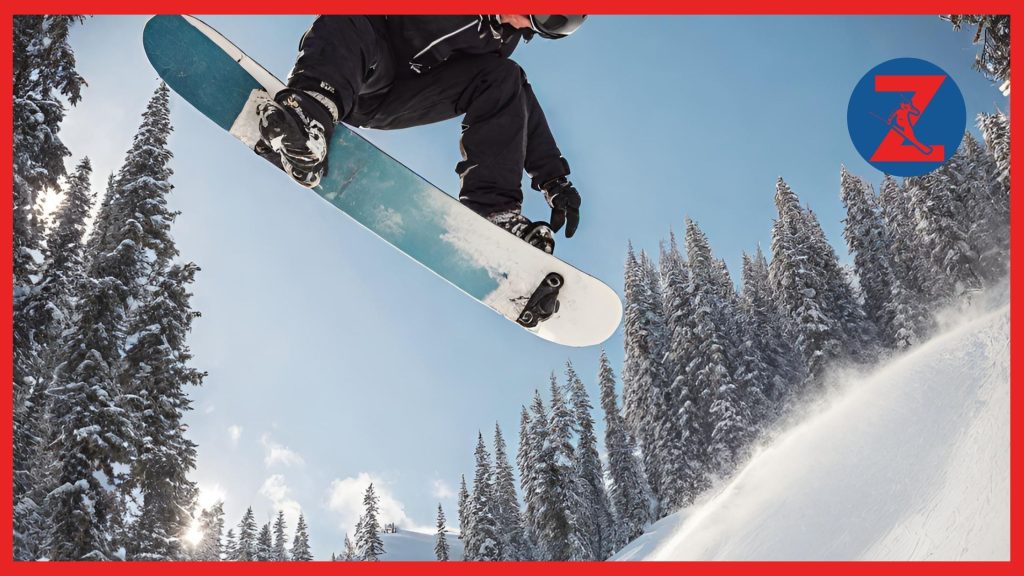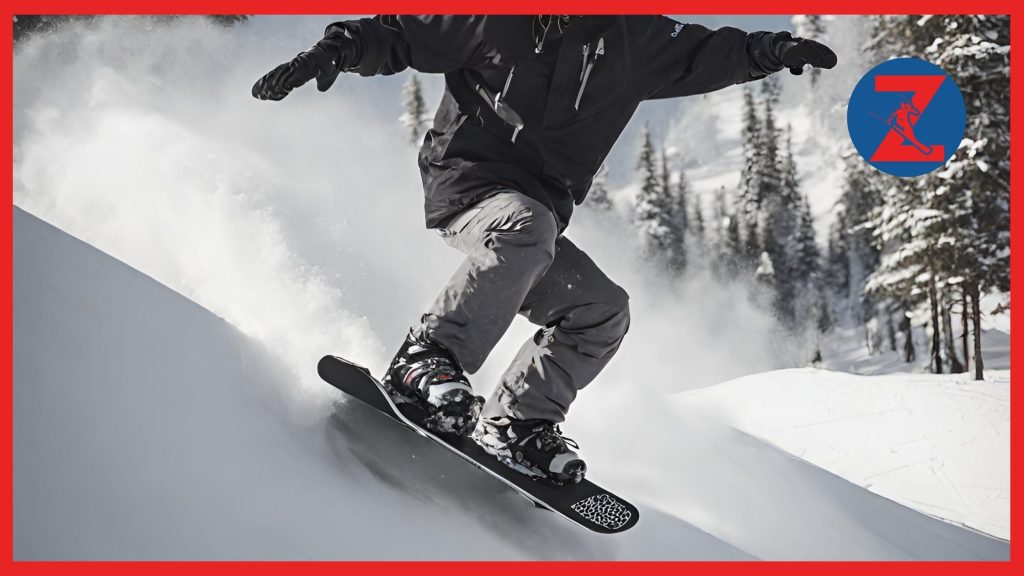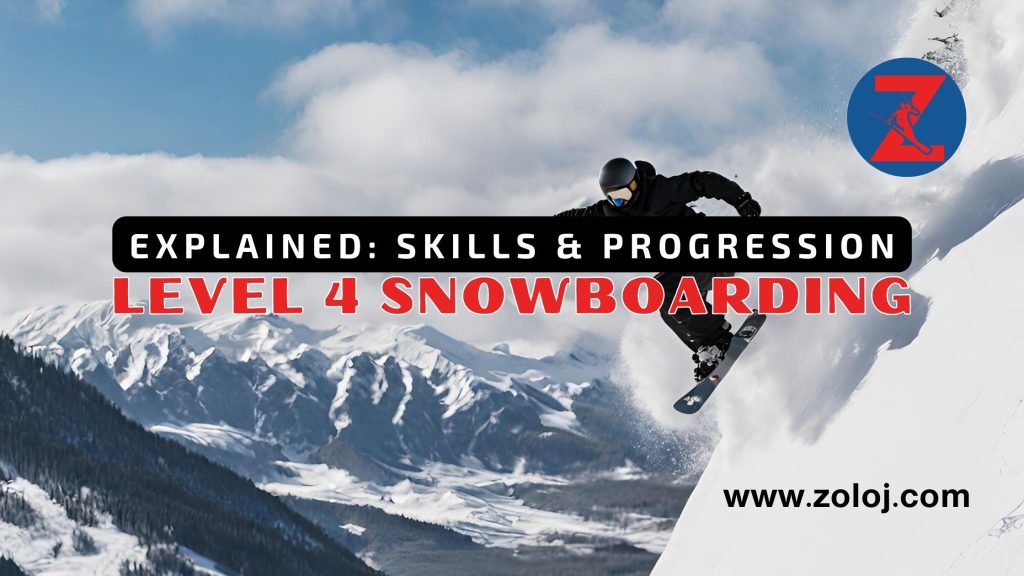In the world of snowboarding, reaching Level 4 is a testament to your dedication and skill on the slopes. It represents an advanced stage of proficiency where riders have honed their abilities and are hungry for more challenges. But what does Level 4 snowboarding really entail? How can you continue to progress and push your limits?
In this article, we will delve into the thrilling realm of Level 4 snowboarding, exploring the skills and progression that define this exciting stage. From mastering the basics to tackling complex tricks and techniques, we’ll uncover the secrets to becoming an accomplished snowboarder.
So, if you’re curious about what it takes to ride at Level 4, and if you want to take your snowboarding journey to new heights, join us as we unlock the mysteries of Level 4 Snowboarding!
Advancing to Level 4: Mastering the Basics and Beyond

Before reaching level 4, snowboarders must first master the fundamental skills of carving, edge control, and linking turns. These skills provide a solid foundation for more advanced techniques.
Level 4 snowboarding introduces riders to a whole new level of challenge and excitement. At this stage, snowboarders are ready to explore advanced snowboarding techniques that push their skills to the limit. Maneuvers such as riding switch, executing grabs, and attempting jumps and spins become part of their repertoire.
Switch riding, also known as riding with your non-dominant foot forward, is a crucial skill to develop at level 4. It opens up a whole new world of possibilities on the slopes, allowing riders to explore different lines and approaches to obstacles. With practice, switch riding becomes more natural and seamless, enabling riders to incorporate it into their runs with ease.
Mastering grabs adds another layer of style and creativity to a snowboarder’s toolbox. Grabs involve reaching down and grabbing the snowboard while performing jumps or spins, adding a visual element to tricks and showcasing individuality. Different grab variations, such as indy grabs or melon grabs, can be combined with spins to create a unique and stylish look.
Level 4 also marks the beginning of attempting jumps and spins. Snowboarders at this stage start exploring the terrain park and learning how to hit jumps safely and efficiently. They start with smaller jumps and gradually progress to bigger features, practicing their takeoff, airtime, and landing. Spins, such as 180s and 360s, introduce riders to more dynamic movements and help develop a sense of body control in the air.
As snowboarders advance to level 4, they begin to develop their own personal style and push their limits further. While mastering advanced techniques is essential, riders are encouraged to embrace creativity and exploration. Level 4 snowboarding is not just about executing tricks—it’s about expressing individuality and finding joy in the process.
Skills and Challenges at Level 4 Snowboarding

One of the most exciting aspects of level 4 snowboarding is the opportunity to master a wide range of advanced tricks and techniques. At this stage of snowboarding progression, riders have honed their foundational skills and can now focus on pushing their limits to achieve new levels of performance. Let’s explore the key skills and challenges that await snowboarders at level 4.
The Mastery of Advanced Tricks
Level 4 snowboarding is all about pushing the boundaries and perfecting advanced tricks. Snowboarders at this level have a solid foundation in basic rail and box tricks, and are now ready to take on more complex maneuvers. This includes executing technical rotations, such as 540s and 720s, and incorporating more intricate grabs into their tricks. These advanced tricks require precise timing, body control, and a deep understanding of balance, making them the ultimate test of skill for level 4 snowboarders.
Riding in Various Terrain and Conditions
Level 4 snowboarders are not confined to a specific type of terrain or condition. They have developed the necessary skills to confidently ride in various environments, including powder, park, and off-piste. Riding in powder requires a different technique and balance compared to groomed slopes, while park riding challenges snowboarders with its terrain features and jumps. Off-piste riding offers the opportunity for exploration and adventure, as riders navigate through untracked snow and challenging natural terrain. Level 4 snowboarding allows riders to experience the thrill of tackling different environments and continuously expanding their snowboarding horizons.
Refining Style, Creativity, and Overall Control
Progression at level 4 extends beyond mastering tricks and techniques. It’s about refining style, developing a distinctive personal flair, and showcasing creativity on the slopes. Snowboarders at this level have a deep understanding of their own riding style and possess the ability to express it through fluid movements and stylish tricks. They also exhibit exceptional control over their board, making precise adjustments and maneuvers with ease. Level 4 snowboarding represents the pinnacle of overall control, where riders can effortlessly adapt to any situation and conquer challenging terrain.
It’s important for aspiring level 4 snowboarders to remember that skill development is a continuous process. Progression to higher levels requires dedication, practice, and a willingness to continually push boundaries. By embracing challenges, striving for excellence, and seeking opportunities to expand their skills, snowboarders can unlock new levels of excitement and achievement in their snowboarding journey.
| Skills | Challenges |
|---|---|
| Mastering advanced rail and box tricks | Executing complex rotations and technical grabs |
| Confidently riding in powder, park, and off-piste | Adapting to different terrains and conditions |
| Refining personal style and creativity | Demonstrating overall control and fluid movements |
Conclusion
Reaching level 4 in snowboarding is a significant achievement that showcases a rider’s ability to confidently tackle advanced techniques and demonstrate their creativity and style on the mountain. However, it’s crucial for snowboarders to remember that skill development is an ongoing process, and there is always room for improvement.
Continuing to practice, consistently challenge oneself, and seek expert guidance are essential elements for further growth and progression in the snowboarding journey. By pushing beyond their comfort zones and embracing new challenges, snowboarders can evolve and reach even higher levels of proficiency.
It’s also worth noting that level 4 is not the end goal; it’s merely a stepping stone towards more advanced snowboarding levels. With dedication and passion, riders can continue to refine their technique, expand their repertoire of tricks, and enhance their overall control on the slopes. Remember, the path to becoming an expert snowboarder is paved with continuous learning and the willingness to push boundaries.
FAQ
What is level 4 snowboarding?
Level 4 snowboarding represents an advanced stage of skill and progression in the sport. It is characterized by the mastery of fundamental techniques such as carving, edge control, and linking turns. At this level, riders can confidently execute more complex maneuvers, ride switch, attempt jumps and spins, and showcase their own personal style on the slopes.
How do I advance to level 4 snowboarding?
To advance to level 4 snowboarding, it is crucial to master the basics first. This includes developing strong carving and edge control skills, as well as the ability to link turns smoothly. Once you have a solid foundation, you can start exploring more advanced techniques and challenges such as riding switch, attempting grabs, and learning spins. Continuous practice, seeking expert guidance, and pushing your limits will help you progress to level 4 and beyond.
What skills and challenges can I expect at level 4 snowboarding?
At level 4 snowboarding, you can expect to master a variety of tricks and techniques. This includes advanced rail and box tricks, complex rotations, and technical grabs. Riders are also comfortable riding in different types of terrain and conditions, including powder, park, and off-piste. While mastering tricks is important, level 4 also focuses on refining style, creativity, and overall control on the slopes.
How can I continue to develop my snowboarding skills at level 4?
To continue developing your snowboarding skills at level 4, it’s important to practice regularly and challenge yourself with new tricks and techniques. Seeking expert guidance, either through training programs, lessons, or coaching, can also help you refine your skills and learn advanced maneuvers. Additionally, riding with more experienced snowboarders and exploring different resorts and terrains can expose you to new challenges and help you progress further.
What are some expert tips for mastering level 4 snowboarding?
As you strive to master level 4 snowboarding, here are some expert tips to keep in mind: – Focus on perfecting your technique and form for each trick or maneuver. – Stay consistent with practice and challenge yourself with new tricks regularly. – Don’t be afraid to take calculated risks and push your limits, but always prioritize safety. – Watch and learn from other experienced snowboarders to gain inspiration and insights. – Embrace failure and setbacks as opportunities for growth and improvement. – Stay motivated and enjoy the process of continuous skill development.
What can I expect in my snowboarding progression beyond level 4?
Reaching level 4 snowboarding is a significant achievement, but the progression doesn’t stop there. Beyond level 4, you can continue to refine your skills, learn even more challenging tricks and techniques, and explore different aspects of the sport. This could include riding in extreme terrain, competing in snowboarding events, or even becoming a snowboarding instructor or coach. The key is to stay focused, keep challenging yourself, and never stop learning.






